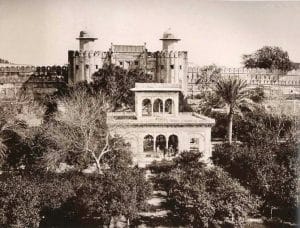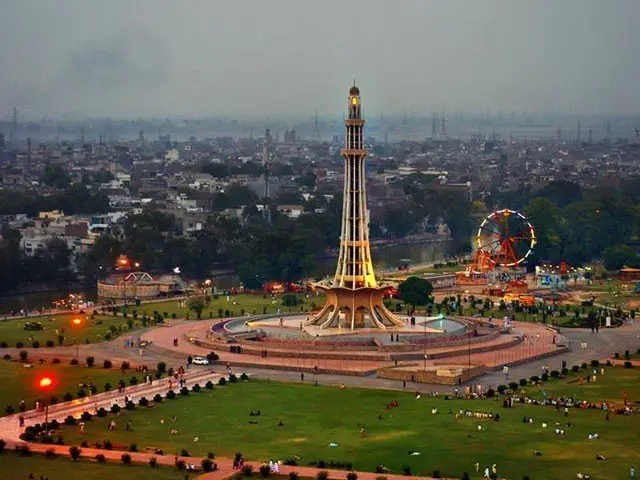Lahore
History of Lahore
It is written in the holy book of Hindus that the city of Lahore was settled by Loh, son of Ram. This is the reason that Lahore is known as Lahore. Other than this, the oldest history of Lahore is first mentioned in the book “Hudood-ul-Alam,” published in 982 AD. Shah Hussain Miran Zanjani, the famous spiritual personality, along with his two brothers, visited Lahore in the same period.

How Lahore Became the Important City
Shortly after his arrival, Mahmud Ghaznavi defeated the Hindu Raja Jayapal and captured Lahore, and Mahmud Ghaznavi’s slave Ayaz built a fort at Lahore for the first time. After that, an important milestone in the history of Lahore was the construction of Sher Shah Suri’s Lahore GT Road. With the construction of this road, the city of Lahore was not only connected with the important cities of the subcontinent, but after its completion, the importance, fame, and breadth of Lahore city continued to increase. If we study the history of Lahore city, a very strange situation emerges.
Highs and Lows in the History of Lahore
At one time, Lahore was counted among the most beautiful cities globally, and at another time, this city was a victim of looting and destruction.
When the Tatars looted and destroyed the city of Lahore, the Mughals rebuilt the city and made it one of the most beautiful and developed cities in the world. A wall was built around the city, and 12 entrances were made. The river flowed outside the wall, and a beautiful garden was made along the river. Eternal buildings like Badshahi Mosque, Fort Lahore, Shalamar Bagh, Jahangir’s Tomb, and Wazir Khan Mosque built during the Mughal period are still a source of pride for Lahore city.
The Sikh era, especially the era of Ranjeet Singh, destroyed the beauty of this city again. For centuries, many Muslim nobles and nobles, in particular, were forced to flee the city, and many of the city’s beautiful historic buildings, shrines, and mosques could not escape looting.
At the end of the long dark century, from 1750 to 1850, when the British took over the rule of Punjab, a new chapter of development of Lahore opened. The British started the construction of many modern buildings in Lahore. Railway Station, Punjab University, Town Hall, District Court, Government College, Museum, High Court, GPO, Montgomery Hall, Aitchison College, Conrad College, Mayo Hospital, Mayo School of Arts, (later National College of Arts) Tollenton Built markets, assembly halls, and countless other buildings. These buildings have a beautiful blend of British, Mughal, and Islamic cultures.
The 55 years from 1860 to 1915 proved to be a period of peace, development, and prosperity for the people of Lahore. During this British period, a modern, beautiful, and new Lahore emerged outside the wall. Undoubtedly, this was the period of development and rise of Lahore.
The Railway system in Lahore started in 1861. Electricity was provided in Lahore city in 1912. The telephone system started. Wide paved roads, sewerage system, supply of clean drinking water, a municipal committee for sanitation, Lahore Improvement Trust for construction of settlements under urban planning, the judicial system for the provision of justice and general. A wide range of schools, colleges, and universities was started to provide education.
Why Lahore is so Famous
Lahore is famous for some reasons. You cannot state a single reason for its popularity. Let us look at some of the reasons one by one. Pakistan’s second-largest city is Lahore, known as Zinda Dalan Lahore’s Zinda Javed, and it is called City of Colleges, City of Flowers, City of Parks, and Film City (Bollywood).
This city, which has the unique honor of “Data Ki Nagri,” was settled by a Hindu king, “Lahut,” on the banks of the river Ravi about a thousand years ago today. Thanks to this, it has gained international, historical, and political significance today.
Another reason for its popularity is that it is simultaneously an ancient and modern city. It has a beautiful combination of historic buildings. ۔
Lahore is also famous for its food. These include Kashmiri Gate’s Gol Gruppe and Dahi Bhalla, Anar Kali Ki Kher, Regal Chowk’s Saleem, Shahi Mohalla’s Pahja’s Sree Paaye, besides these Lahore dishes include Tabaq, Charsi Tikka, Danba Karahi, Ludo Pethiyan, Keema Walay Naan, Pathura, Bong, Nahari, and Chakkar Chhole are very popular.
Pakistan’s largest food street adjoins the southern wall of the Badshahi Mosque, where Barbie cuisine and fast-food items are always ready to enchant domestic and foreign tourists, as well as Lakshmi Chowk and Old Anarkali.
In the vast area of Greater Iqbal Park, Minar, Pakistan, a 200 feet high monument is located. This minaret has been built on the exact spot where the chair of Quaid-e-Azam presided over 79 years ago. On March 23, 1940, when the resolution was passed by a large gathering of nearly 300,000 Muslims at the annual meeting of the Lahore All India Muslim League.
A short distance south of Minar, Pakistan, is the second-largest mosque in Pakistan, the Badshahi Mosque, where about 100,000 Muslims can pray at a time.
Conclusion
Suppose you want to understand the city of Lahore. In that case, you can understand it by the two famous sayings about Lahore: “Jine Lahore nahin dekhya o jamya e nai” this famous Punjabi quote means that If you don’t visit Lahore, you have not been born yet. Another saying about Lahore is, “Seven days and eight fairs, how can I go home.” It means that there is so much fun in Lahore that I don’t have time to go home
